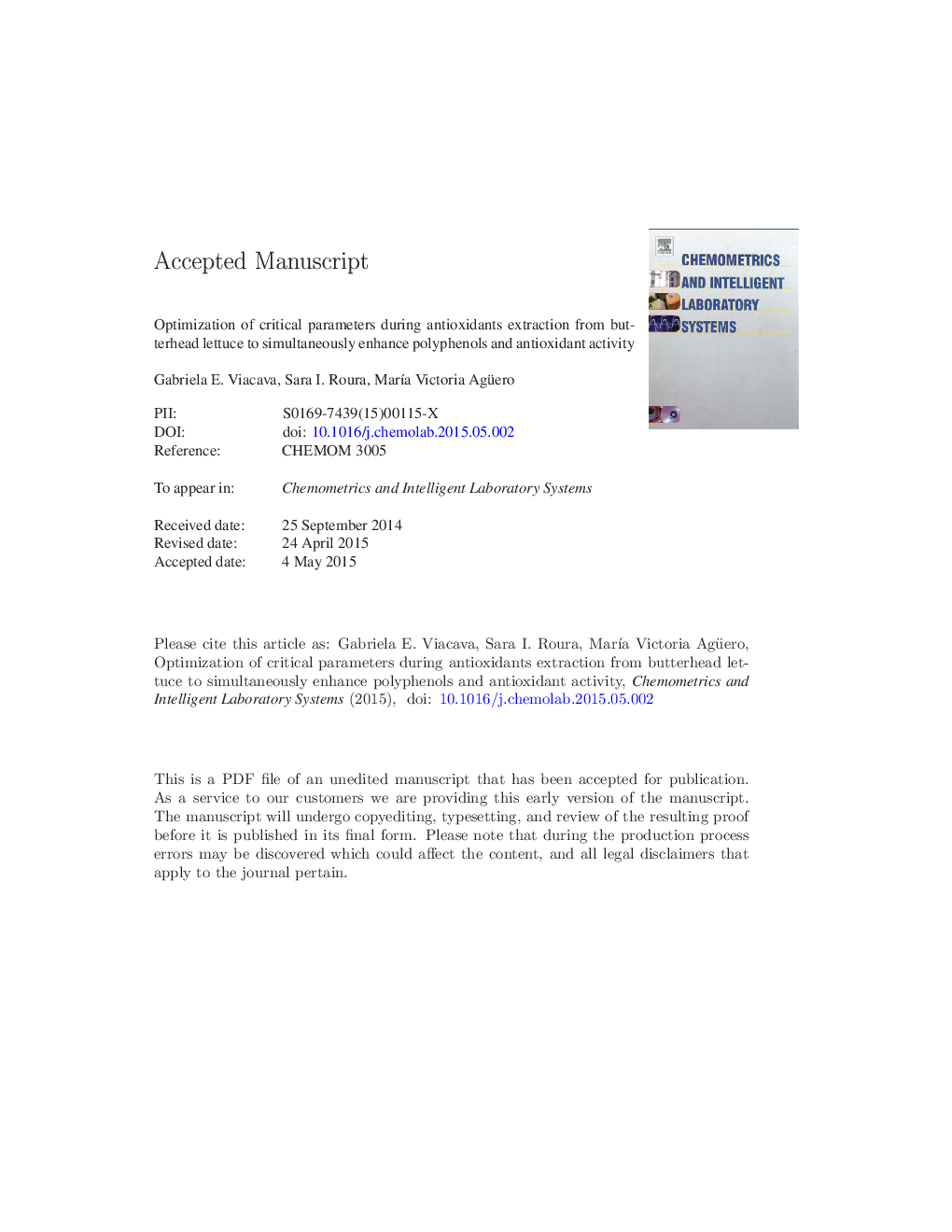| Article ID | Journal | Published Year | Pages | File Type |
|---|---|---|---|---|
| 7562877 | Chemometrics and Intelligent Laboratory Systems | 2015 | 36 Pages |
Abstract
The present work was undertaken to optimize critical parameters (ethanol concentration, time and temperature) for antioxidant extraction from lettuce leaves, measured through DPPH radical scavenging activity (DRSA) and total phenolics content (TPC), using Response Surface Methodology (RSM). Individual optimization of each response was carried out and compared with a simultaneous optimization that allowed maximizing the two responses at the same time. For simultaneous optimization, Desirability function with the Larger-the-Best criteria was employed. Determination coefficients (R2) for the second-order models adjusted by RSM were above 91% and the models showed non-significant Lack of Fit. Single optimization of DRSA found conditions for extraction (70% ethanol, 32 °C and 2.5 h) that allowed obtaining 69.62 mg ascorbic acid equivalent (AAE)/100 g FW, while 43.20 mg gallic acid equivalents (GAE)/100 g FW was predicted for TPC. Meanwhile, when optimizing only TPC as a single optimization, extraction conditions changed (70% ethanol, 42 °C and 2 h) obtaining values of 46.92 mg GAE/100 g FW for TPC and 65.43 mg AAE/100 g FW for DRSA. Optimal conditions found when the Desirability function was applied to simultaneously enhance DRSA and TPC were: 70% ethanol, 32 °C and 2 h. Under these conditions, good values for both responses were predicted: 69.62 mg AAE/100 g FW and 44.37 mg GAE/100 g FW for DRSA and TPC, respectively. These results were validated and a close agreement between experimental and predicted values indicated the suitability of the model employed and the success of RSM in modeling responses to characterize their dependence with extraction conditions under evaluation. Additionally, it was demonstrated the advantage of applying the Desirability function when more than one response must be optimized finding a compromise solution without harming any response as could happen when considering the optimal conditions for only one of them.
Related Topics
Physical Sciences and Engineering
Chemistry
Analytical Chemistry
Authors
Gabriela Elena Viacava, Sara Inés Roura, MarÃa Victoria Agüero,
